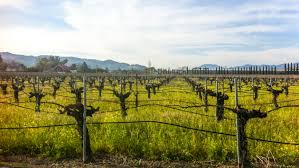Sustainable viticulture: the use of cover crops in vineyards

In the quest for sustainability within viticulture, the practice of planting cover crops in vineyards emerges as a key strategy, offering a myriad of environmental and viticultural benefits. Beyond the conventional approaches to vineyard management, cover crops represent a return to more holistic, ecologically harmonious practices. This blog post delves into the nuanced roles of cover crops in promoting sustainable viticulture, highlighting the less-discussed aspects of their impact on vineyard ecosystems and wine quality.
The multifaceted role of cover crops
Soil health and erosion control: cover crops play a crucial role in maintaining soil health by enhancing organic matter, improving soil structure, and increasing water infiltration. They prevent soil erosion, a significant concern in hilly vineyard regions, by stabilizing the soil with their root systems. According to a study by the american society of agronomy, cover crops can reduce soil erosion by up to 95% compared to bare soil, showcasing their effectiveness in preserving the vineyard’s foundational resource.
Biodiversity and pest management: the introduction of cover crops contributes to vineyard biodiversity, supporting a range of beneficial insects and microorganisms. This increased biodiversity helps in natural pest management, reducing the reliance on chemical pesticides. For instance, flowering cover crops can attract and sustain beneficial insects like bees for pollination and predatory insects that control vineyard pests, fostering a balanced ecosystem.
Enhancing vine health and grape quality
Water management and drought resilience: cover crops can significantly influence water dynamics within a vineyard. Their presence helps regulate soil moisture levels, reducing water runoff and ensuring more consistent water availability to the vines. In regions facing water scarcity, cover crops can enhance drought resilience by improving soil structure and water retention. A study published in the “Journal of environmental quality” found that cover cropping could increase water infiltration rates by up to 35%, highlighting their role in effective water management.
Nutrient cycling and reduced fertilizer use: by fixing atmospheric nitrogen and recycling nutrients back into the soil, cover crops reduce the need for synthetic fertilizers, which are often energy-intensive to produce and can contribute to greenhouse gas emissions. Leguminous cover crops, such as clover and vetch, are particularly effective at nitrogen fixation, providing a natural nutrient boost to the vines and promoting healthier, more sustainable vineyard soils.
The challenges and considerations of implementing cover crops
Selection and management of cover crops: the benefits of cover crops depend significantly on the choice of species, planting density, and management practices. Vineyard managers must carefully select cover crops that complement the specific needs and conditions of their vineyard, considering factors such as climate, soil type, and vine age. The management of cover crops, including mowing, incorporation, and rotation, requires thoughtful planning to maximize their benefits while minimizing potential competition with vines for resources.
Economic and operational considerations: while the long-term benefits of cover crops for vineyard sustainability are clear, their implementation requires upfront investment and adjustments to vineyard management practices. The economic and operational impacts of adopting cover crops must be carefully evaluated, balancing short-term costs against long-term gains in vineyard health, grape quality, and ecosystem services.
Conclusion
The use of cover crops in vineyards stands as a testament to the wine industry’s growing commitment to sustainable viticulture. By enhancing soil health, promoting biodiversity, improving water management, and supporting natural nutrient cycling, cover crops offer a pathway to more environmentally responsible wine production. As the industry continues to evolve, the integration of cover crops into vineyard management practices highlights a broader shift towards ecological stewardship and sustainable agriculture, ensuring the health and resilience of vineyard ecosystems for generations to come.






